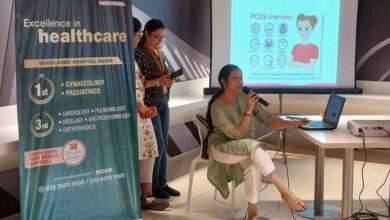Health
BUURTZORG India To Expand Home Healthcare Services to New Districts

The rising prevalence of chronic diseases among the elderly people and the need for better primary and postoperative care, BUURTZORG, leading in HOME healthcare from Netherlands, operating since 2017 in India, is expanding its operations and plans to setup caregiving teams in the locality in select districts of West Bengal, Odisha, UP and Delhi.
The demand for home healthcare is expected to be a high post-COVID-19 pandemic. Home healthcare services will continue to be the best alternative for the dependent geriatric population due to their convenience & efficiency. Home chronic care is expected to reduce hospital visits. Buurtzorg is one of the largest and most innovative Community Home Care Nursing organisations, internationally recognized and multiply awarded. Buurtzorg is famous for its patient tailored approach in communities, working in a team-based approach where nurses not only provide the medical part of the care but are also in charge to do comprehensive assessments, develop tailored care plans and to overall orchestrate the entire care process, also involving community resources where appropriate. “Our ambition is not only to make the life of the client more pleasant but to help the client to become again more healthy and independent again” said Dr. Stephan Dyckerhoff, President & CEO, Buurtzorg, Asia with warm gesture.
BUURTZORG deploys independent teams of 6-12 caregivers and Nurses in the ratio of 9:3 in the locality of 5000-10000 population. These independent teams cater to ever increasing demand of healthcare services at HOME to provide professional care to elderly population and others in need of care. BUURTZORG thru its Indian partner organization mobilizes local human resources, trains them intensively on caregiving and then offers attractive job opportunities which leads to a professional. motivated and stable workforce.
BUURZORG over the years has invested in creating the skilled work force and provided more than 600000 hours of patient services in the cities of Kolkata, Bhubaneswar, Lucknow and Varanasi.
India’s elderly population (aged 60 and above) is projected to touch 194 million in 2031 from 138 million in 2021, a 41 per cent increase over a decade, according to the National Statistical Office (NSO)’s Elderly in India 2021
The percentage share of the elderly population in the total population is said to rise from 8.6 per cent in 2011 to 10.1 per cent in 2021 and projected to touch 13.1 per cent in 2031.
While elderly decadal growth is predicted to rise from 35.5 per cent in 2001-11 to 35.8 per cent in 2011-21 to 40.5 in 2021-31, the growth is said to decline from 17.7 to 12.4 to 8.4 per cent in the general population, respectively.
The India home healthcare market size was valued at USD 7.4 billion in 2021 and is expected to expand at a compound annual growth rate (CAGR) of 19.27% from 2022 to 2030. The increasing need for better quality postoperative & primary care, advancement in technologies, rising disposable income, the shift of trend from communicable to lifestyle diseases, and the increasing availability of improved home care services with the technology-enabled platform are expected to drive the market growth. The growing geriatric population & dependency ratio in India is expected to drive the demand for home healthcare.
According to Union History’s aging study of India, approximately 70% of seniors in India have chronic diseases. Such a population necessitates the use of nursing homes, hospices, and home healthcare services. With the help of home healthcare services, patients can save 10% to 25% on their overall medical treatment costs. Modern networking has enabled physicians to access patient data from remote locations and provide immediate consultation. For Instance, staying in an ICU in a hospital can cost between USD 450 and USD 650 per day, whereas setting up an ICU-like environment at home with equipment and medical expertise can cost between USD 95 and USD 125 per day.
Physical, occupational, and/or speech therapy accounted for the highest share in the skilled home care segment. These services assist patients in regaining physical, mental, and cognitive abilities aiming at improving patients’ quality of life and helping them live a normal or near-normal life. These services are widely used because they improve patient compliance and medication adherence, reduce relapse, and increase attendance and support. All of these factors can be attributed to this segment’s significant market share.
Unskilled home care services include grooming, bathing, dressing, personal care, and other daily living aids at home. It also involves homemaker tasks such as laundry, dinner preparation, and house cleaning. These services are expanding rapidly as they fill gaps and satisfy unmet needs that are not met by skilled care. Furthermore, increased disposable income and the growing need for tailored treatment are expected to contribute to segment growth.




